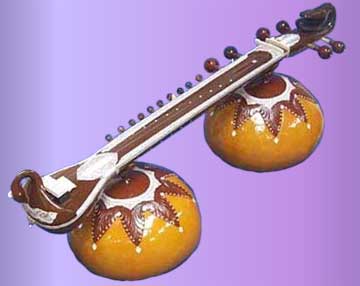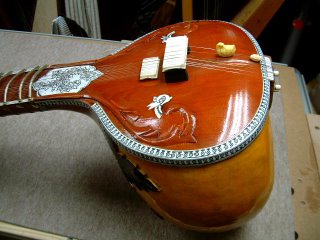Conniving Mullahs of Bangladesh
A.H. Jaffor Ullah
A.H. Jaffor Ullah
How did conniving Mullahs gain upper hand in sonar Bangladesh?
How time has changed in my ancestral homeland, Bangladesh! Hardly few years ago if I would have written an article critiquing the obscurantist mullahs of my motherland detailing how they are dictating the social agendas and submit those article via Internet, the chances were higher that the articles won’t see the light of the day. However, now things have turned 180 degrees. Go ahead and open the web version of any newspapers in Dhaka excepting maybe Inquilab or the likes of it that peddled fundamentalists’ view – you will be in for a pleasant surprise. Now most editorials and Op-Ed articles would vilify one way or another the fundamentalists of various hues that took the nation of 145 million mostly impoverished people for a joyride in a slow and outdated cart whose name I better not mention here lest I offend the religious sensibility of many a folk in Bangladesh. The ride ended rather abruptly. Thanks to western governments for they threw the proverbial monkey wrench to spoil the fun and games of scheming mullahs who are now running for the cover. It seems as if, the only language the ruling government of Khaleda Zia understands is the spoken by Uncle Sam. What the powerful uncle wants he gets it. The memory of Daisy Cutter Bombs wreaking havoc amongst Afghan and Iraqi people while creating soccer stadium sized enormous crater in ground zero is still fresh. So, why fuss with the Bush Administration? Good logic one might say.
The ruling elites of Bangladesh were having endless parties for the last few years and they want the party to continue; thus, why not listen to America or EU. Or else, they may take the punch bowl away from the party. No body amongst the ruling party wants this to happen; thus, came the arrest order for troublemakers who had been blasting homemade bombs since 1999. The editors of Dhaka’s newspapers welcomed the move by the government and they wrote rather effusively how the government became so proactive in catching the masterminds of Islamic terrorism for once and all. A few of the editors however thought the arrests were stage-managed. It has been a while that the two bigwigs (Shaikh Abdur Rahman and Siddiqul Islam) of Jihadi movement were nabbed but the government is buying time to make the exciting story into humdrum gossip stuff. Soon people will find other interesting subjects such as the upcoming parliamentary election to talk about and in the process the nation will forget who did protect the Shaikh and Bangla Bhai and which banks help laundered the money coming from Middle East. Haven’t we seen how the memory of grenade blasts in Awami League meeting ground in August 2004 and Kibria killing in January 2005 had faded from the mind of our people. Time, for sure, has healing power and the government of Khaleda Zia knows this axiom. Therefore, wait few more months to notice that not many people are talking about diabolic figures such as Shaikh Rahman, Bangla Bhai or Prof. Ghalib. Oh, I forgot one more thing. People will become disinterested in knowing who amongst the ruling party did lend a helping hand to JMB goons and which bank helped the bombers and grenade tossers to bankroll their heinous activities.
Through this article, I would like to bring into fore how the mullahs or Islamists gained the upper hand while transforming this docile agrarian society into a very violent one in the span of over half a century. Yes, readers believe it or not the seed of Islamization was sown in pre-partition time. It took more than two decades to break the dormancy of the seed. The seed germinated and the young seedling was about to be killed in post liberation day by Sheikh Mujib’s policy. Boy, was it good news for the Isla mists that a Ray-Ban clad Major General who once joined the liberation movement under questionable circumstances brought back the Islamists into the parlor politics of Bangladesh after conspiring with a band of rogue majors in the army and a pro-west Awami League leader. Sheikh Mujib, the father figure of the nascent republic, was assassinated along with his entire family barring two daughters who were out of the country at the time. The seedling of the poisonous plant (in Bengali called Bish-Brikkho) was growing happily under the tutelage of the first military dictator of the nation, Gen. Ziaur Rahman. A cantonment intrigue did him in following the adage that that plays with sword may die from it. It was a blessing in disguise, really. Another charlatan army general was waiting in the wings in 1982 to take the nation the path of Islamization only to consolidate his power. The rogue General provided the needed nutrition to make the poisonous plant grow at an accelerated pace. Lake, the bespectacled first army General who engineered the first coup d’etat, the second one also maimed the secular constitution of Bangladesh by inserting such phrase as “The state religion of the Republic is Islam, but other religions may be practiced in peace and harmony in the Republic.” (Article 2A of Part 1 – The Republic].
The first despot (the Ray-Ban clad one) also changed the preamble of the 1972 constitution effacing the word “secularism” and then replacing later the following phrase: “The principles of absolute trust and faith in the Almighty Allah, nationalism, democracy and socialism meaning economic and social justice, together with the principles derived from them as set out in this Part, shall constitute the fundamental principles of state policy. (1A). Absolute trust and faith in the Almighty Allah shall be the basis of all actions.] [Part II Fundamental Principles of State policy].
The mullahs of the country took the cue from the military despot thinking that the nation has become a full-fledged Islamic country. The founding fathers of the nation had this idea that the newly formed nation will have a secular fabric going forward. But how quickly, politics had changed the course of the nation. Many observers of Bangladesh in the mid seventies thought there was a conspiracy in three camps, namely cantonment, civil bureaucrats, and in a faction of Awami League headed by Khandaker Mustaque to remove Sheikh Mujib from power. They thought Islam was in great danger in the nascent republic where fine arts, music, drama, poetry, etc., were flourishing at an astonishing pace. The Mullahs were marginalized in the new republic because of their conspiratorial role during our liberation movement in 1971. The Islamists, therefore, heaved a great sigh of relief when they learned that Awami League was made a leaderless political entity in the aftermath of Sheikh Mujib’s assassination and in the wake of November jail House killing in which the top echelon of secular political party were wiped out by the waving of conspiratorial hands in the military barrack. Thanks to army General Ziaur Rahman. No wonder the mullahs revered this dangerous man.
The two military despots who ruled with an iron fist from 1977 from 1989 helped the cause of Mullahs. The marathon outdoor preaching session by Wahhabites, which dates back to 1940s, received a boost in the arm when the first despot gave government land to Tablig al-Jamaat in the edge of the northern suburb of Dhaka in Tongi. The General himself used to attend the 5-day preaching session in winter month to show his utmost religiosity. The same thing happened during the rule of second military despot. These two men in uniform thought that if they could please the hoi polloi of the nation, they could rule the country uninterrupted. These two despots were not religious at all, but the wily mullahs played into their game willfully.
The real dark horse during the reign of the second despot was the political party Jamaat-i-Islami. This was a hodgepodge of Islamic-minded people who believed in theocracy. This party wanted Bangladesh to be a truly Islamic nation a la Taliban Afghanistan. Many rank and file Jamaat went to Afghanistan to fight Russian communists alongside with Afghan Mujahedeens. When the Soviet soldiers left Afghanistan in 1989 after ten years of bloody fighting, these Jihadi Bangladeshi fundamentalists returned home with Islamic ideals. They learned guerrilla warfare tactics while they were in occupied Afghanistan. Now they wanted to put their newly acquired skills into use in theirs motherland. Many of them joined madrassahs (Islamic schools) where they recruited young students for the cause of Islamic Bangladesh. As this was going on, we read the news of frequent post-Jumma (Friday) prayer procession from Dhaka’s main mosque where calls for Islamic Constitution Movement were given with a regular periodicity.
The Islamists did their ground work all through the 1980s and 1990s in all nooks and crannies of Bangladesh. Many Islamic NGOs were set up in the villages and the nation saw a proliferation of mosque and madrassahs construction. No accurate count is available but suffice it to say that there are tens and thousands of madrassahs scattered allover the tiny nation of which some are even called Quomi or National madrassah.
Let us look at the financial sector Bangladesh for telltale sign of Islamization. The Islamic banks started their business in the nation at the same time to address the difficult question of interest payment to Muslims, which is against the basic tenet of Islam. No body noticed that suddenly many activities got underway all in the name of Islam. All these enterprises had one goal – take the nation to the path of Islam. Some Muslim preachers thought being a Muslim was not good enough – Bangladesh needs to be an Islamic country – 100%. The impetus for this idea came in late 1970s from two world events namely emergence of mullahdom in Iran where Imam Ayatollah Khomeini transformed the Iranian society from pro-western to an Islamic one. The second idea came from a predominant Sunni nation of Afghanistan. The clarion call for saving Islam in Afghanistan came from the clergies as they fought the mighty Russians. When the Russians finally decided to leave Afghanistan in late 1980s after fighting a bloody war for about ten years the mullahs allover were elated falsely assuming that no force is good enough to block the growth of Islam as a political entity.
The above political developments in Iran and Afghanistan helped solidify the belief amongst mullahs in Bangladesh that the nation of teeming Muslims will one day become a truly Islamic nation just like the ones in Iran and Afghanistan. Thus, one of the battle cries in Bangladesh was “amra hobo taliban, bangla hobe afghan” (We will become Taliban).
While visiting Bangladesh in the summer of 2001 I went to Cox’s Bazar by road from Dhaka, which gave me a rare opportunity to see the countryside of my ancestral homeland. I could not believe my eyes what I saw happening to the secular fabrics of this nation. Not only that many roadside mosques and madrassahs mushroomed in the rural areas, the number of preachers in bazaars doing fund raising while resorting to marathon preaching also went up. Most local preachers were using a language that had Arabic and local dialects mixed up and they were telling horrific tales to scare people if they do not follow the strict dictums of Islam. Upon inquiring I learned that these mullahs mostly belong to Ahle Hadis group or some variety of Wahhabi sects. Needless to say that the Sufi variety of Islam that was so prevalent in rural Bangladesh was on the way out. The likes of Tablig al-Jamaat, Ahle Hadis, and Wahhabites had made a good penetration in Bangladesh society for which the Kakrail mosque located in the eastern corner of Ramna Garden should get the full credit. What is more disturbing is Bangladesh’s educated class who I thought was the shock absorber of these alien concepts fell victim to marathon preaching of the mullahs. Thus, Delwar Hossain Saydee (a self proclaimed Allama from Jamaat), Obaidul Hoque (Khatib of Dhaka’s main mosque Bait-ul Muqarram), Fazlul Haque Amini (a self acclaimed Mufti), Azizul Hoque (a self proclaimed Shaikh ul Hadis), Ghulam Azam (ex-chief of Jamaat), Motiur Rahman Nizami (present chief of Jamaat and cabinet member of Khaleda Zia government, 2001-2006), and more like them have becomes the spokesperson for Islam in Bangladesh.
Recently, I visited a website by the name Islam in Bangladesh (http://www.islam-bd.org/), which I think is a mouthpiece of Jamaat. Quite a few things are very interesting and worth noting in this website. They have given a prestigious list of “Legendary Islamic Heroes” in Bangladesh in which one could find the name of General Ziaur Rahman, the first despotic military ruler who ushered in the Islamic parties into politics. Ziaur Rahman was never inclined to Islam in his personal life but to consolidate his power he used it rather blithely. The mullahs know it very well about the General’s pro-west lifestyle but to show their allegiance to him they included his name in the coveted list of Islamic heroes in Bangladesh. The website also includes the name of Prof. Shamser Ali, Shah Abdul Hannan, and quite a few mullahs who are prominent among preaching (waaz mehfil) circuits in the country. Prof. Shamser Ali’s dubious contribution to the growth of Islam is legendary for he found a connection between the celestial trip Meraj and Einstein’s theory of relativity. Another secularly educated charlatan, Shah Abdul Hannan, has already become a think-tank guru among Islamists for his “erudition” and vast knowledge in Islam. These crafty writers have given the much-needed intellectual support for the growth of Islamism in Bangladesh.
As I was penning the article, a thought came to my mind regarding the role of civil society in Bangladesh in the rapid growth of Islamism in the country. The pillars of Bangladesh civil society are all educated from secular schools, colleges, and universities. Many of them also had gone abroad to receive higher education and training. But surprisingly, they let the mullahs take over the control of Bangladesh society. I am still waiting to hear or read any article in the 1980s and 1990s in which some brave thinkers would tell the mullahs bluntly that a line should be drawn to demarcate the province of religion and social life. Mullahs have a role to play in society but the context should be religion. Thus, they have a role in birth, marriage, and death of Muslims similar to one played by church preachers and Brahmins for respective communities. But when the jihadi Mullahs of Bangladesh started to cross the line telling people how to lead their life and restructure the governance of the society to reflect Islam in all layers of the society, then, the writers, intellectuals should have forewarned the Bangladesh society about the negative side of this transformation. The polity under the control of mullahs would transform an otherwise vibrant society immersed in science and technology, and modernity into something like antiquated time. All the growth humanity had made in last two-hundred century in communication, education, medicine, civil law, public administration, etc., would stop to make rooms for obscurantist-led ideas in which all the gains made thus far will be wasted. Still then, the pillars of society kept their mouth sealed and saw the glide of society to yesteryears. This was very painful for me to watch the inactivity amongst the very brightest people of Bangladesh.
In 1999, I wrote some satirical pieces in Daily Star while revealing the inane behavior of Bangladesh’s mullahs for which I received not commendation but execration. In 2000 I met a DU professor of Economics in New Orleans when I asked him what he thinks about the growing menace of Islamists. His flat reply was that in Islamists won’t pose a threat to Bangladesh society. To bolster his opinion he said that Jamaati politicians are not vote grabbers. I however begged to differ with him.
Every time I visited Bangladesh I saw telltale signs of Bangladesh going the Mullahs way. It was scary to see the one-hundred names of Allah in Arabic written on a wall outside the Old Airport located in Tejgaon where I grew up in the 1950s and 1960s. Please see the Islamic structure right opposite the gate of Zia International Airport that sports some Arabic slogans. Who are paying for all these and where do they want to take this nation. A foreigner would mistakenly think that Arabic is widely spoken here and our culture is stepped in Middle Eastern ethos.
The Mullahs of Bangladesh brainwashed our people to the extent that many college graduates changed their view once they cross half-century mark. These otherwise sensible people become so much enamored with Islam that they don’t mind joining Tablig al-Jamaat, a revivalist movement that flourished in Sonar Bangla because of tireless work of many Mullahs who were influenced by the teachings of Deobandi Mullahs and Wahhabi doctrine. These folks suddenly become fatalistic thinking that everything about human being is programmed by a superior force. With this kind of thinking, the Mullahs “learned” opinion made inroads in many folks’ personal life. They do not question the intelligence of a preacher; they simply followed his dictums. Suffice it to say that rationality has no place in these environs. It is not only the common people but many full professors of Dhaka University, Rajshahi University, Chittagong University, etc. suddenly find their epiphany in late life. Some of them tirelessly work to find out if Meraj was possible in the light of quantum physics, or if DNA was programmed by God. Thus, it is not out of the ordinary to find that many of the ex-professors in Bangladesh then join dubious Islamic organizations. These are Shamser Alis and Shah Hannans of Bangladesh civil society. Some of them are Internet-savvy enough to post their rebuttals in various forums. People like Mr. Shah Abdul Hannan think it is their duty to defend the superiority of Islam in the Net. By defending the religion these folks think that they are serving Islam.
I could easily write more on the subject of roles played by poorly educated mullahs to Islamize Bangladesh. However, I should limit my discussion lest the article becomes a prolix one.
To sum up, through the caprice of some genius politicians the Mullahs came to the limelight. A faction of Islamists became delusional in thinking that they could change the secular and manmade constitution of Bangladesh if they simply give a clarion call for jihad. Is the worst is over as far as Islamization of Bangladesh is concerned? I do not think so. The government caught a few radical Islamists who were blasting homemade bombs to usher in Islamic Sha’ria laws. The government only caught few leaders from one banned Islamists’ party but what about the others? My take on this is the following: as long as Mullahs are spreading fundamentalists’ dogma through hard preaching, the jihadi activities will remain alive in our ancestral homeland. Therefore, we should not think for a moment that bomb blasting, and grenade lobbing is going to go away from Bangladesh. On top of it, all the proliferation of Islamic schools (read: Madrassahs) would produce innumerable numbers of new graduates every year. Would the graduates come home to roost? Only time could tell. Therefore, remain alert. Contrary to what Alex Perry wrote in Times Asia in the second week of April 2006, all is not well in Bangladesh.
-------------------------
Dr. A.H. Jaffor Ullah, a researcher and columnist, writes from Ithaca, New York.







